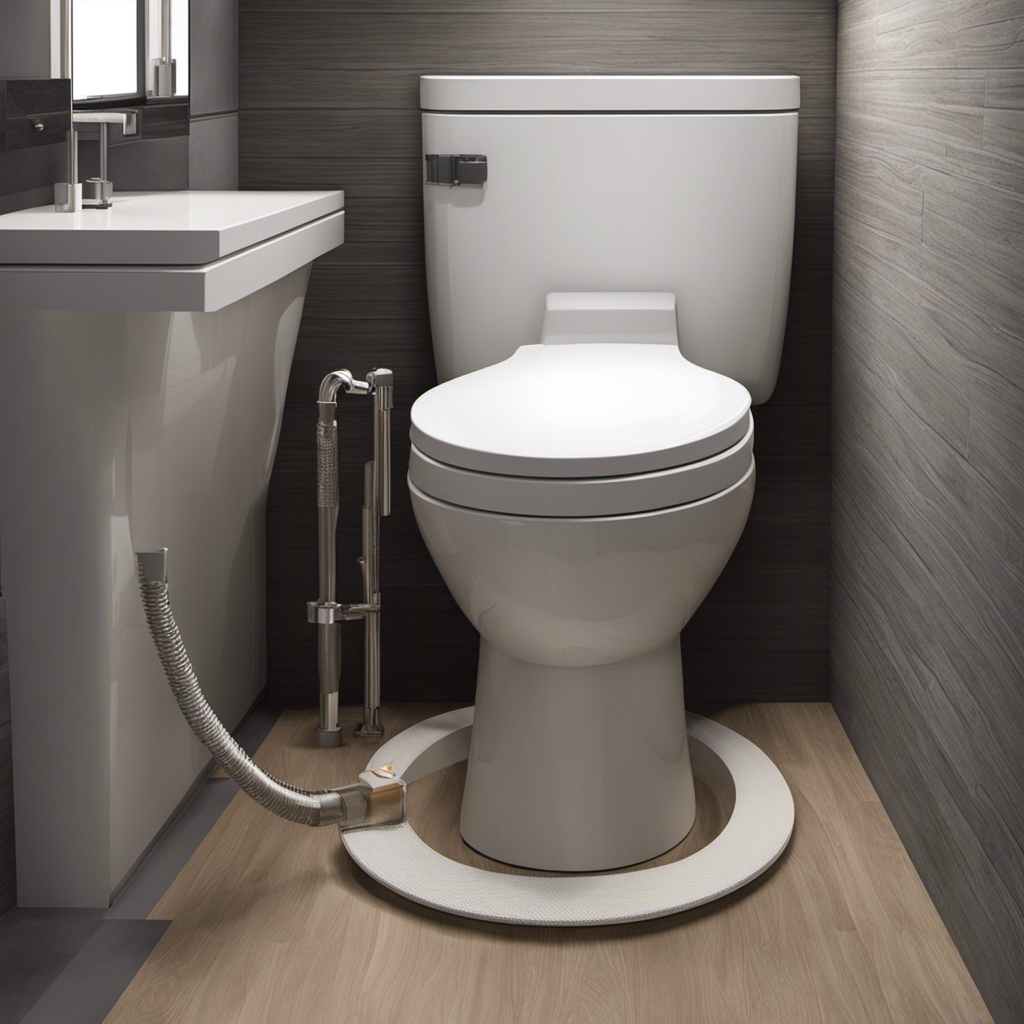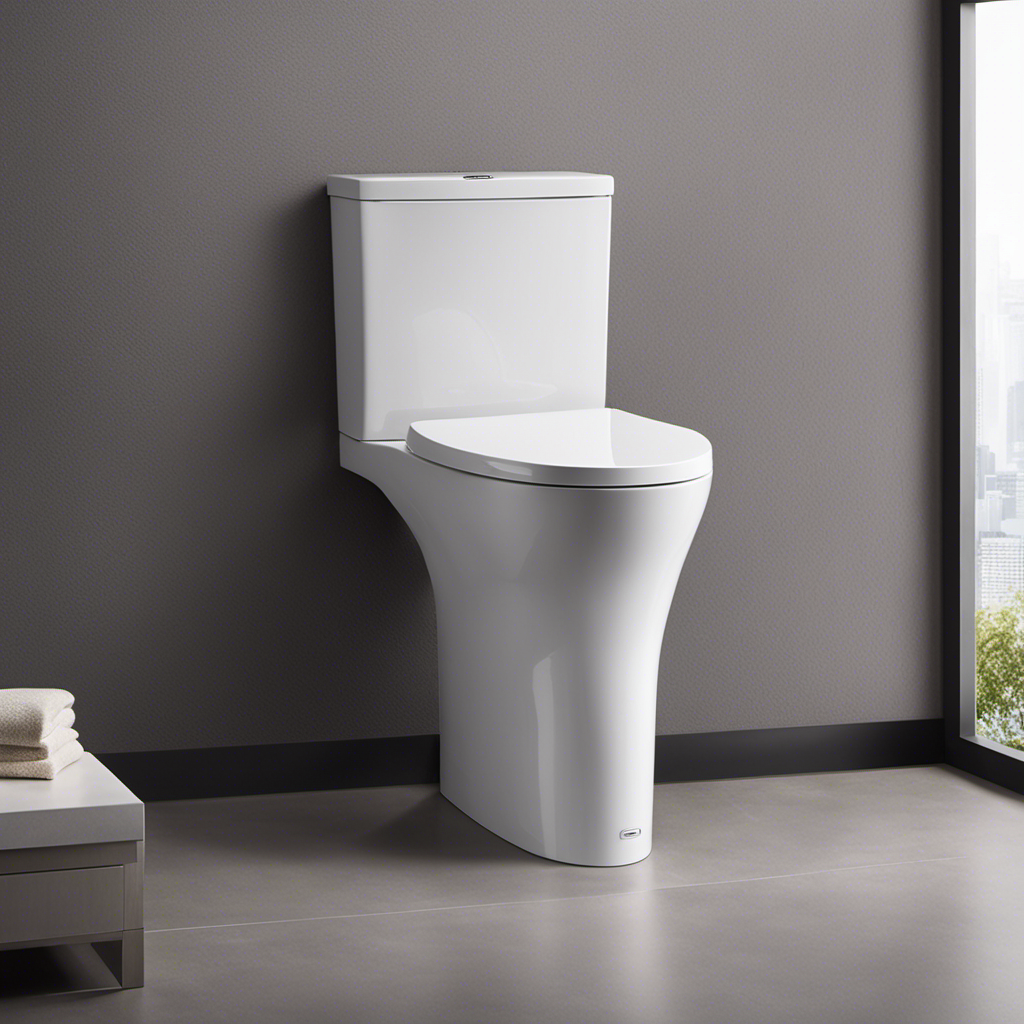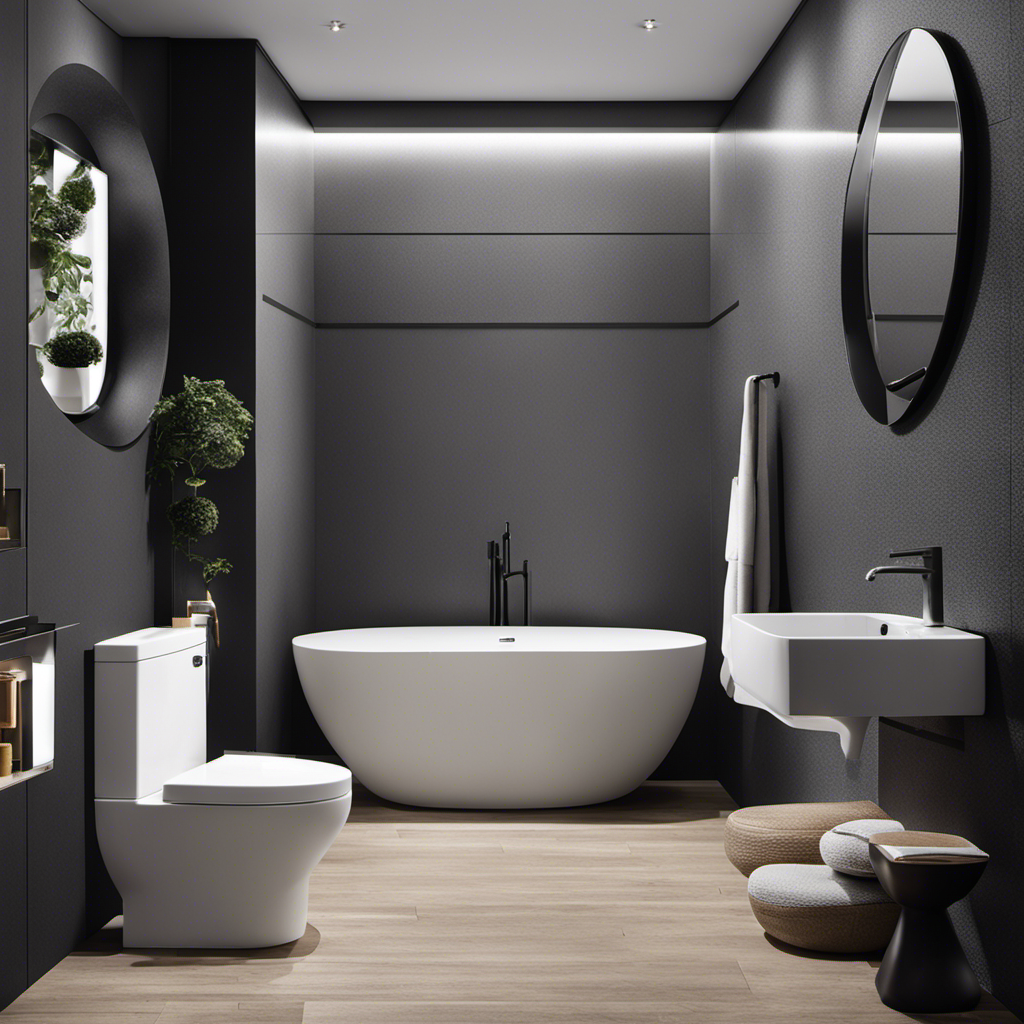I’ve always dreamed of having a fully functional bathroom in my basement. Now, I’m finally making that dream a reality.
In this article, I’ll guide you through the step-by-step process of putting a toilet in your basement.
From planning and preparation to assessing plumbing requirements, choosing the right toilet, and connecting it to the plumbing system – I’ve got you covered.
Get ready to transform your basement into a convenient and comfortable space with a brand new toilet.
Key Takeaways
- Assess the basement layout and consider proximity to existing plumbing lines for suitable toilet installation area
- Select a toilet designed for below ground installations to prevent backflow and sewage odors
- Choose a toilet made with durable materials and an efficient flushing mechanism to prevent clogs
- Properly connect the toilet drain to the main sewer line and ensure a watertight seal for waste removal and prevention of basement toilet issues
Planning and Preparation
Now that you’ve decided to put a toilet in the basement, it’s time to start planning and preparing.
The first step is to assess your basement layout. Look for an area that is suitable for a toilet installation, considering factors such as proximity to existing plumbing lines and accessibility for future maintenance.
Once you have identified the ideal location, the next step is to ensure proper plumbing access. Determine if there are existing plumbing lines nearby that can be connected to the toilet, or if you will need to install new pipes. Take accurate measurements and consider any obstacles that may need to be addressed during the installation process.
With a well-thought-out plan and the necessary plumbing access, you are ready to move on to assessing the specific plumbing requirements for your basement toilet installation.
Assessing Plumbing Requirements
First, you’ll need to evaluate the plumbing requirements for installing a bathroom fixture below ground level. When putting a toilet in the basement, there are a few key considerations to keep in mind.
One of the most important factors is evaluating space constraints. You’ll need to determine if you have enough space to accommodate the necessary plumbing pipes and fixtures.
Additionally, selecting appropriate materials is crucial for a successful installation. Make sure to choose pipes that are resistant to corrosion and can withstand the pressure of water flow. It’s also important to select a toilet that is specifically designed for below ground installations, as these are equipped with features that prevent backflow and sewage odors.
Choosing the Right Toilet
When selecting a toilet for below ground installation, ensure that you choose one that is specifically designed to prevent backflow and sewage odors. The toilet bowl should be made with durable materials, such as vitreous china, to withstand the pressure and weight of the underground installation.
Look for a flushing mechanism that is efficient and powerful enough to effectively remove waste and prevent clogs. Consider toilets with pressure-assisted or gravity-assisted flushing systems, as they are commonly used in below ground installations. Pressure-assisted toilets use compressed air to force water into the bowl, while gravity-assisted toilets rely on the force of gravity to create a powerful flush.
These mechanisms are designed to ensure proper waste removal and prevent any issues with backflow or odors in your basement toilet.
Installing the Toilet Drain
To properly install the toilet drain, it’s important to ensure that it is connected securely to the main sewer line. One crucial component of this connection is the toilet flange. The flange is a ring-shaped fitting that is installed on top of the drain pipe and serves as a solid base for the toilet to be attached to. In a basement bathroom, it is even more critical to have a secure connection as any leaks or improper installation can lead to water damage and costly repairs.
Here is a table that outlines the steps to install the toilet drain in a basement bathroom:
| Step | Description |
|---|---|
| 1 | Measure and mark the location of the toilet flange on the floor. |
| 2 | Cut a hole in the subfloor and expose the main sewer line. |
| 3 | Attach the toilet flange to the main sewer line using a rubber gasket and screws. |
| 4 | Ensure the flange is level and securely fastened to the floor. |
| 5 | Connect the flange to the toilet drain pipe using PVC cement. |
| 6 | Test for leaks and make any necessary adjustments. |
Following these steps will ensure a proper and secure installation of the toilet drain in your basement bathroom.
Connecting the Toilet to the Plumbing System
A key step in connecting the toilet to the plumbing system is making sure the wax ring is properly seated on the toilet flange. This ensures a watertight seal and prevents leaks.
Here are some important considerations when connecting the toilet to the plumbing system:
-
Toilet placement: It is crucial to position the toilet in the right place, aligning it with the plumbing drain. Measure the distance from the wall to the center of the toilet flange to ensure proper alignment.
-
Ventilation options: Adequate ventilation is essential for maintaining a healthy bathroom environment. Consider installing a ventilation fan to remove moisture and odors. This helps prevent the growth of mold and mildew.
-
Flange bolts and nuts: Securely fasten the toilet to the floor by tightening the flange bolts and nuts. Use a wrench to ensure a tight fit, but be careful not to overtighten and crack the toilet.
By following these steps, you can successfully connect your toilet to the plumbing system and ensure proper functionality.
Remember to consult a professional plumber if you encounter any difficulties or have any questions.
Conclusion
In conclusion, putting a toilet in the basement can be quite a task, but with proper planning and preparation, it can be accomplished smoothly.
Assessing the plumbing requirements and choosing the right toilet are essential steps in ensuring a successful installation.
Installing the toilet drain and connecting it to the plumbing system may require some expertise, but it can be done with careful attention to detail.
With these steps in mind, you’ll soon have a convenient and functional bathroom in your basement, making it a more comfortable space for all.










